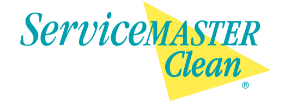The Difference Between Hazmat and Hazcom
Each year, hundreds of thousands of chemicals are used around the United States. Many of these chemicals improve life – such as those used in medical settings – but they can also cause harm to people and the surrounding environment if handled incorrectly.
To help minimize such effects, government standards have been implemented to dictate how materials are handled and how employees are informed about hazardous materials. Learn more about HazMat and HazCom standards with help from the professionals at ServiceMaster Clean.
What Is HazMat?
HazMat, short for Hazardous Materials or Hazardous Material Program, are in place to teach members how to properly clean-up and contain hazardous materials in the workplace. A hazardous material is any material that can harm people, property or the environment.
The HazMat category covers a broad range, from the liquid you pour to unclog drains to the materials used in nuclear devices. While HazMat is most often used when referring to hazardous materials transport or clean-up, the HazMat label is actually broader than the typical usage. In fact, it can refer to every facet of hazardous materials, including use, transport, production, clean-up, and emergency response.
What Is HazCom?
HazCom, short for Hazard Communications Standards or Hazard Communication Program, refers to the requirements for informing employees about the chemicals used in the workplace. Also referred to as the "Right to Know" program, HazCom ensures that those who are exposed to or use the chemicals are fully aware of the dangers involved and trained to use the products as safely as possible. HazCom is an aspect of HazMat Communication that goes beyond the actions of the employer. It also dictates the information that chemical manufacturers are required to put on their product labels or otherwise supply with the products.
Every hazardous chemical is required to have a Material Safety Data Sheet (MSDS) which contains all relevant safety information for that specific chemical. Every MSDS and complete HazCom booklet should be accessible to employees while at work.
Employee training is also a major part of HazCom. When an employee is new to the job, the employer must train the employee in the correct safety standards for the handling, use and storage of each hazardous chemical used in that facility. If a new hazardous chemical is introduced into the workplace, the employer must ensure that employees are trained about it, as well.
Hazardous Materials Clean-Up
As an employer, you must adhere to all the regulatory requirements of HazMat and HazCom as they relate to your facility. But in situations where you or your employees are exposed to hazardous materials, or find yourself in need of a clean-up, it can be extremely helpful to have assistance from the experts.
At ServiceMaster Clean, we are highly-trained in HazMat standards and fully equipped to assist with the hazardous material clean-up at your facility. We can ensure that all materials are correctly cleaned and disposed of, keeping your staff and patients safe. Learn more about our comprehensive, customized healthcare cleaning services that follow HazMat, HazCom, and other essential safety procedures.








